The 7 Habits of Highly Effective Marathoners
If you want to run your best 42.2, you’ll need to do more than log kays and complete key workouts.
These strategies will help you set appropriate marathon goals, persevere when the going gets tough, and create a mind-set that’s primed for success.
The secrets to a breakthrough race may lie in unexpected places. Sure, most runners dissect their long runs, interval workouts, and nutrition, but the best runners look beyond those metrics to reach their full potential. That was the key takeaway from researching and reporting our new book, Peak Performance: Elevate Your Game, Avoid Burnout, and Thrive with the New Science of Success.
Although one of us (Steve) coaches pros who have been on the cover of this magazine and the other (Brad) writes about sports science, we discovered novel ways to optimise athletic performance by interviewing world-class artists, intellectuals, entrepreneurs, and musicians. By looking outside of running – and studying not only physiology but also psychology, sociology, and even philosophy – we uncovered powerful strategies that can help all athletes succeed.
While we learned far more than can fit on these pages (that’s why we wrote a book!), what follows are seven of our favorite discoveries, all backed by the latest scientific research.
Habit 1. Find Your Purpose

A very well known sports-science theory says the brain shuts down the body long before it reaches its physical limits. But emerging science shows it may be possible to transcend this – if you stay inspired.
For a recent study, researchers used brain scans to examine what happens when people are presented with threatening messages. In individuals who were asked to reflect deeply on their core values (e.g., to be a good spouse or parent, to have courage) prior to receiving such a message, their underlying neurology became more receptive: The test subjects’ brains moved the subjects toward the challenge instead of going into protection mode. In other words, the more we think about our deep-seated beliefs, the better we rise above shallow, in-the-moment concerns and disconnect from our body’s perceived limits.
Apply it: Set a goal beyond running a marathon. Consider raising money for a charity you support, dedicating your race to a person or a cause, or joining a team. Your purpose needn’t be complex: It can be as simple as “to inspire my children to live a healthy lifestyle” or “to be part of a positive community when the world seems to need positivity.” When the going gets tough – during your most challenging workouts or on race day – reflect on your purpose to help you power through.
Habit 2. Aim for the Sweet Spot
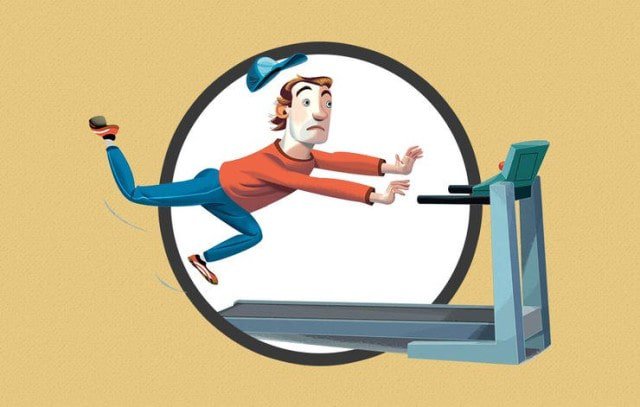
When psychologist Mihaly Csikszentmihalyi, was studying how the best performers continuously improve, he noticed they all pushed themselves to their limits, and perhaps just a bit beyond – the kind of growth-promoting stress that we like to call a “just-manageable challenge.” These challenges manifest when you take on something that makes you feel a little out of control but not anxious. Any less of a challenge and you’d think, “I’ve got this in the bag.” It’d be too easy to stimulate improvement. Any more of a challenge, however, and the unnerving feeling of your heartbeat pounding in your ears would make it hard to focus. What you’re after is the sweet spot: when the challenge at hand is on the outer edge of your current skills.
Apply it: Select a training plan and finishing-time goal that are just a bit outside of your comfort zone. This doesn’t mean you should go from running 50 kilometres a week to 100, but it might mean building up to 65 or 75. As far as workouts go, if you’re always hitting your targets, you may not be setting your sights high enough. While you shouldn’t completely blow up (at least not often), you should struggle – and even occasionally fail – to nail your hardest training sessions. A race-time calculator like the one here can help you choose a just-manageable goal: Plug in a recent race result (preferably for a half marathon or 10 kilometre) to estimate what you might achieve in the marathon.
Habit 3. Warm Up Body and Mind
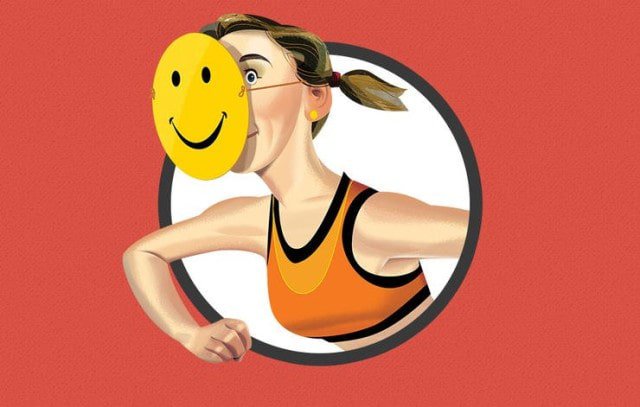
If your brain’s in a funk, your body will follow: Research conducted by exercise scientist Samuele Marcora, found that even subtle mood influencers can alter performance. In one study, Marcora flashed either happy or sad faces on a screen as well-trained cyclists pedalled all-out. The faces were flashed so briefly that they could only be recognised by the subconscious. Still, those who were exposed to the happy faces performed 12 percent better than the sad-faces group. His findings support years of anecdotal evidence that athletes tend to perform best when everything is clicking – not only during a race or workout, but also in their lives beyond running.
Apply it: Try to boost your mood heading into challenging workouts and on race day. This may mean listening to your favourite music, spending quiet time in nature, or hanging out with friends or (sometimes) family. In the week leading up to your marathon, remember that steering clear of negative vibes helps you cultivate a positive mood. So minimise life stressors: Avoid (to the best of your ability) people who drag you down, choose comedies over tear-jerkers or horror films, and get the rest you need to feel 100 percent.
Habit 4. Choose Less
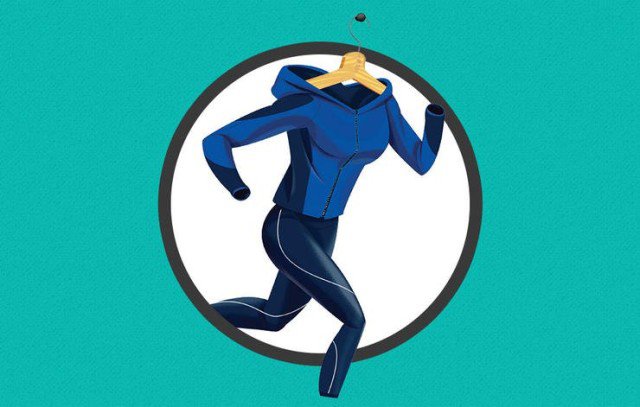
Having a workplace “uniform” – Facebook CEO Mark Zuckerberg’s gray T-shirt and hoodie, for example – is common practice among busy, high-performing people. Why? According to a theory proposed by psychologist Roy Baumeister, we have a limited reservoir of mental energy to use on any given day.
Initial research on this theory focused on self-control – how resisting temptations early in the day makes us more likely to give in later – but scientists soon learned that making decisions also wears us out. Experiments found that people who were asked to choose between consumer goods (e.g., colour of T-shirt, brand of shampoo) performed worse than those who were presented with only one option on subsequent tests of everything from physical stamina to persistence to problem-solving. The researchers concluded that even when it comes to simple things, “making many decisions leaves a person in a depleted state.”
Apply it: If you can, work with a coach. You won’t burn energy planning or scheduling your training – you can shut off your brain and just do the workouts. Even though both of us (Brad and Steve) know a lot about running, when we’re training hard, we work with coaches for this reason. The night before your goal marathon, lay out your gear, commit to a plan for when you’ll depart (and where you’ll park), and have a pre-race meal ready. Automate as much of your training and race day as possible to conserve mental energy for running your fastest.
Habit 5. Practice “Calm Conversations”
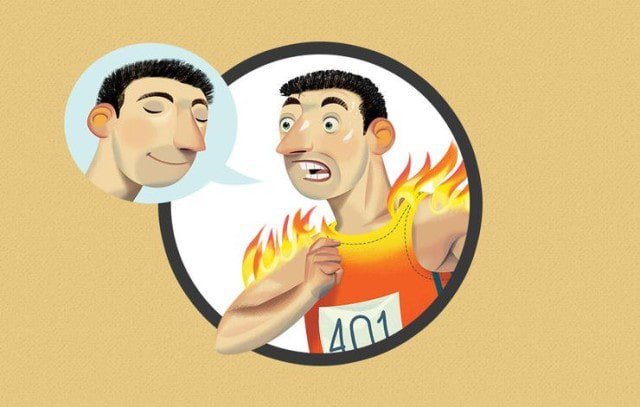
When pain sets in during a hard run, everyday runners may think, “Oh crap, this already hurts, and I’ve got a long way to go.” These emotionally charged thoughts can have physical consequences – like tense muscles and an elevated heart rate – that cause diminished performance. But instead of panicking, the best runners (like the ones that Steve coaches) have in their minds what Steve calls a “calm conversation,” like, “This is starting to hurt now. It should. I’m running hard. But it is going to be okay.”
Being able to separate pain from suffering in this way also promotes recovery: Research has found that after hard training, elite athletes’ heart-rate variability (HRV) – an indicator of physiological recovery – returns to baseline far faster than that of average folks. This shows that elite athletes are able to transition from stress to rest better than their more novice peers.
Apply it: When doubts occupy your headspace, practice calm conversations. As your effort and pain levels increase, don’t try to distract yourself or fight it. Instead, practice accepting it: Remind yourself that the pain is a sign that you’re doing the work that will make you faster. After hard workouts, take a few deep breaths and use them as a cue to transition from the “stress” of a workout to a more restful state.
Habit 6. Follow Stress with Rest

Top American runner Bernard Lagat takes a rest day at the end of every hard training week – an uncommon practice among pros. On those days, the five-time Olympian engages only in activities that relax and restore his body and mind, such as massage, light stretching, and playing with his kids. He also takes a five-week break from exercise at the end of each season, a practice that has helped his career stretch on for almost 20 years. Many of us believe that if we’re not always working hard, we’ll fail to thrive. But if we never take “easy” periods, we are never able to go full-throttle.
Apply it: Stress plus rest equals growth, which we call “the growth equation.” Too much stress leads to injury or burnout; too much rest leads to a failure to improve. So, follow hard days with easy ones and plan regular rest days (one to three per week). After a few hard weeks of training, take an easier, step-back week. And schedule a longer break (at least 10 days) from running after your marathon.
Habit 7. Reframe Race-Day Nerves
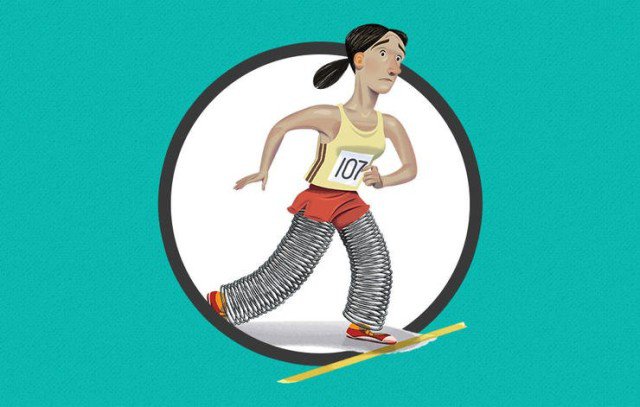
At the start of an Olympic event, few of the athletes appear to be anxious. Contrast this with any local 5K, where runners trying to go sub-25:00 stress over racing toward a finisher’s medal they’ll receive regardless of their performance. It’s not that pros are immune to stress – they just know how to channel it effectively. In a study of elite and non-elite swimmers, researchers used a survey to measure stress before a major race, and then asked each athlete if they viewed stress as beneficial or harmful. Prior to the race, both the elite and non-elite swimmers experienced the same intensity of cognitive and physical stress. The difference was that the non-elites viewed stress as something negative to try to quiet, while the elites interpreted the stress as an aid to their performance.
Apply it: Recent research shows that “forcing” yourself to calm down can be disadvantageous: When you try to suppress nerves, you are telling yourself that something is wrong. It takes emotional energy to fight the anxiety – energy that could be better spent on racing. Instead, know that the sensations you feel prior to your marathon are neutral: If you view them in a positive light, they are more likely to have a positive effect on performance.
Adapted from Peak Performance: Elevate Your Game, Avoid Burnout, and Thrive with the New Science of Success, by Brad Stulberg and Steve Magness (Rodale).
READ MORE ON: marathon

